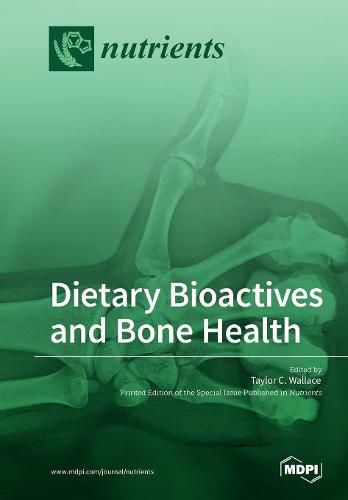Readings Newsletter
Become a Readings Member to make your shopping experience even easier.
Sign in or sign up for free!
You’re not far away from qualifying for FREE standard shipping within Australia
You’ve qualified for FREE standard shipping within Australia
The cart is loading…






This title is printed to order. This book may have been self-published. If so, we cannot guarantee the quality of the content. In the main most books will have gone through the editing process however some may not. We therefore suggest that you be aware of this before ordering this book. If in doubt check either the author or publisher’s details as we are unable to accept any returns unless they are faulty. Please contact us if you have any questions.
There is general agreement within the fields of food, nutrition, and medical sciences that an individual’s diet and lifestyle can substantially predispose one to, or protect against osteoporosis, low bone mass, and numerous other age-related bone diseases. Dietary bioactives, found diversity in a variety of foods from fruits to vegetables, herbs and spices, essential oils and beverages, have the potential to influence bone health. The NIH Office of Dietary Supplements has defined dietary bioactives as compounds that are constituents in foods and dietary supplements, other than those needed to meet basic human nutritional needs, which are responsible for changes in health status. These compounds are generally thought to be safe in food at normal consumption levels (e.g., polyphenols in plant foods). Dietary bioactives are currently being assessed for their properties beyond antioxidant capacity, including anti-inflammatory actions. Some compounds or classes of compounds have been reported to enhance bone formation and inhibit bone resorption through their actions on cell signaling pathways that influence osteoblast and osteoclast differentiation.
Emerging scientific evidence is available, including observational studies and small clinical interventions that suggest consumption of certain dietary bioactives may have beneficial effects on bone health. Animal models have the unique advantage of feeding controlled diets for extended periods of time to assess long-term changes in bone. While bone mineral density (BMD) is the gold standard for assessing fracture risk, other factors such as bone structure, including trabecular thickness and separation, influence bone strength. Bone turnover rate is also predictive of fracture. Future research is needed to determine the types and quantities of dietary bioactives that are most effective and at what dose, as well as the mechanisms involved in modulating cellular events, in order to set precedence for larger clinical trials.
$9.00 standard shipping within Australia
FREE standard shipping within Australia for orders over $100.00
Express & International shipping calculated at checkout
This title is printed to order. This book may have been self-published. If so, we cannot guarantee the quality of the content. In the main most books will have gone through the editing process however some may not. We therefore suggest that you be aware of this before ordering this book. If in doubt check either the author or publisher’s details as we are unable to accept any returns unless they are faulty. Please contact us if you have any questions.
There is general agreement within the fields of food, nutrition, and medical sciences that an individual’s diet and lifestyle can substantially predispose one to, or protect against osteoporosis, low bone mass, and numerous other age-related bone diseases. Dietary bioactives, found diversity in a variety of foods from fruits to vegetables, herbs and spices, essential oils and beverages, have the potential to influence bone health. The NIH Office of Dietary Supplements has defined dietary bioactives as compounds that are constituents in foods and dietary supplements, other than those needed to meet basic human nutritional needs, which are responsible for changes in health status. These compounds are generally thought to be safe in food at normal consumption levels (e.g., polyphenols in plant foods). Dietary bioactives are currently being assessed for their properties beyond antioxidant capacity, including anti-inflammatory actions. Some compounds or classes of compounds have been reported to enhance bone formation and inhibit bone resorption through their actions on cell signaling pathways that influence osteoblast and osteoclast differentiation.
Emerging scientific evidence is available, including observational studies and small clinical interventions that suggest consumption of certain dietary bioactives may have beneficial effects on bone health. Animal models have the unique advantage of feeding controlled diets for extended periods of time to assess long-term changes in bone. While bone mineral density (BMD) is the gold standard for assessing fracture risk, other factors such as bone structure, including trabecular thickness and separation, influence bone strength. Bone turnover rate is also predictive of fracture. Future research is needed to determine the types and quantities of dietary bioactives that are most effective and at what dose, as well as the mechanisms involved in modulating cellular events, in order to set precedence for larger clinical trials.